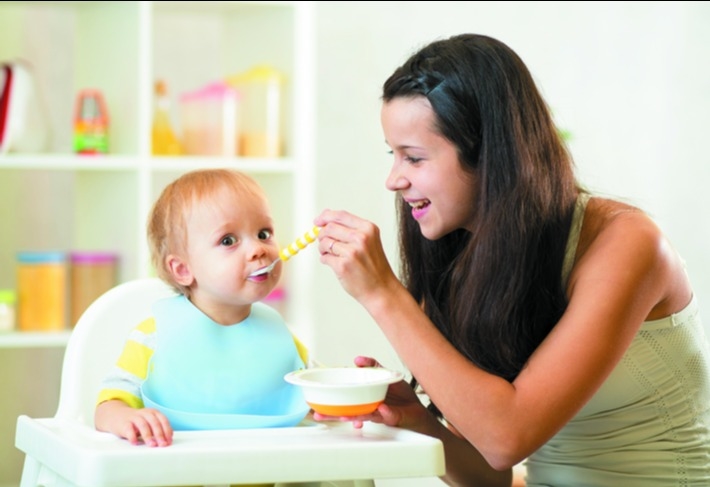
The Ultimate Weaning Guide For Infants By Dr R K Anand: Part 3
1 Mar 2016 | 4 min Read
Baby Chakra
Author | 501 Articles
Self-led weaning
After the age of 9 months (or even earlier in children who are interested), encourage the child to eat by herself. Do not be upset if she makes a mess. You may help her, but she should get a feeling that she is managing by herself. To begin with, offer her foods which she can pick up with her fingers, like a thin piece of toast or biscuit (plain or fried), shreekhand (sweetened curd cheese), porridge, pumpkin and small pieces of fruits like bananas, chikoos and papayas.
The child may choke a little while learning to eat. Do not be scared, but be with her while she eats, in case she gets into trouble. Let her start getting used to a spoon. Let her dip a teaspoon into a preparation. But never force the child to eat more than she wants. Respect her appetite. Even if half a spoon is left in the bowl, stop feeding her if she shows any signs of not wanting to eat any more (keeping her mouth shut, turning her head to the side or pushing the food out).
Foods that may be avoided in the First Year of Life
Foods that are more likely to give rise to allergic reaction till the child completed 1 year. These are artificial milk (cow, buffalo or powder milk), eggs, fish and citrus fruits like orange and sweet lime.
In families with a strong history of allergy, besides the above foods, even peanuts, other nuts, chocolate, wheat, corn, onions, tomatoes, cabbage, and all types of berries should be avoided. If any member of the family reacts adversely to a particular food, avoid that as well.
Also avoid fried foods and foods that contain added sugar or artificial sweeteners or are high in salt. Some authorities also do not recommend honey to be given below the age of 1 year, because it may contain a certain infective agent. Although I have never seen any such adverse effect in my practices, it may be advisable to avoid it, especially in the first few months.
Should other foods be given before or after milk feed?
As the main diet of the child up to the age of 6 months should only be breast milk, other foods, if given between 5 and 6 months of age, must be offered after a breastfeed.
Between 6 months and 1 year, the other foods can be given after or between two milk, feeds. Let the baby decide when she wants to have them. Do not cut down frantically on breastfeeding. However, you should feel free to leave the child behind and for her to be given other foods in your absence.
Amount of Food to be given to Infants
Children vary a lot in their eating habits. In general, I am against prescribing a fixed menu. However, some mothers may offer an adequate amount to the child, but they may not, for instance, realise that a child of one year needs about a 1,000 calories of energy – almost half of what many adults take. So it is advisable to have some idea about how much of different foods a child can be offered. After that, we should leave it to the child to decide how much she wants to consume. A good guide that the child is having an optimum quantity of food is her level of activity and weight gain.
Also read more about: The Ultimate Weaning Guide for infants by Dr R K Anand: Part 1, Part 2
Source: Book – Guide to Child Care by Dr R K Anand
To consult Dr R K Anand in person, click here
Source for banner image: citylifedundee.com
A


Related Topics for you
Suggestions offered by doctors on BabyChakra are of advisory nature i.e., for educational and informational purposes only. Content posted on, created for, or compiled by BabyChakra is not intended or designed to replace your doctor's independent judgment about any symptom, condition, or the appropriateness or risks of a procedure or treatment for a given person.
